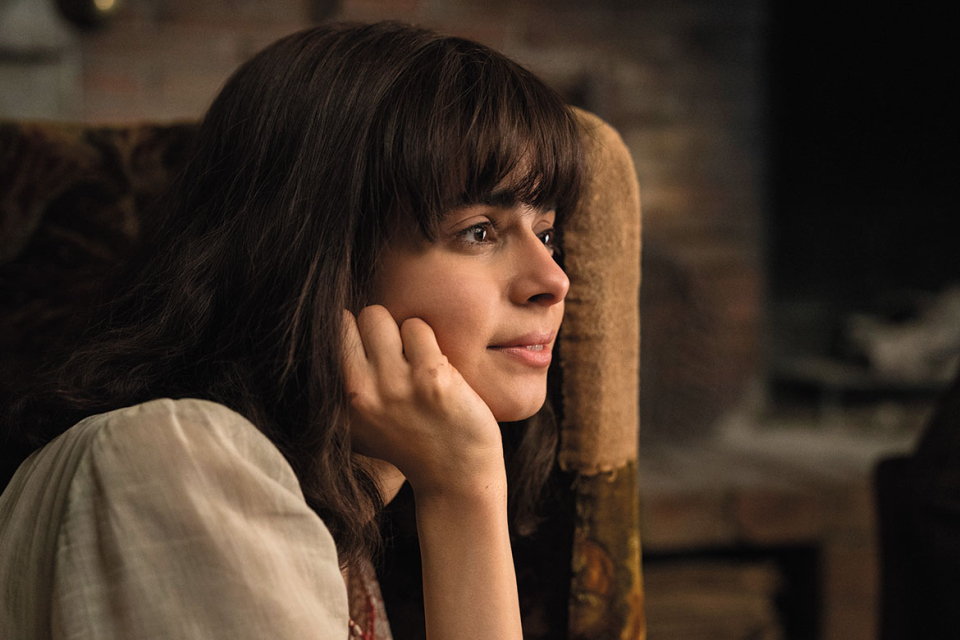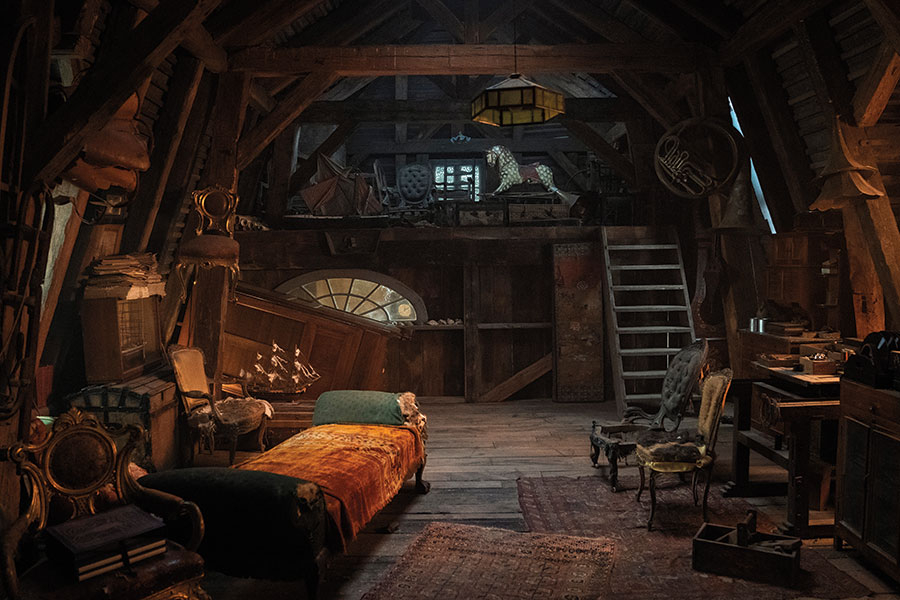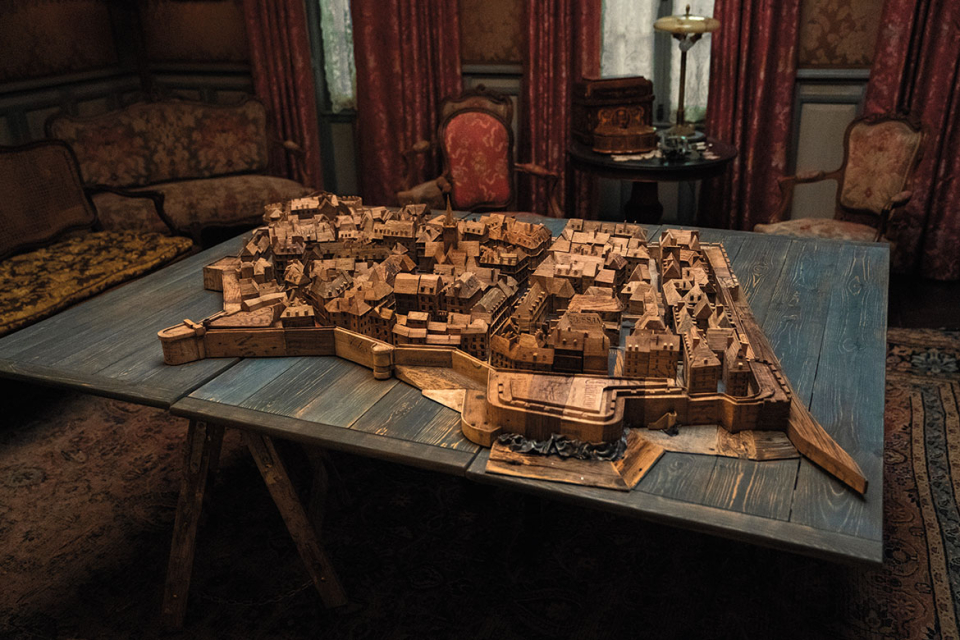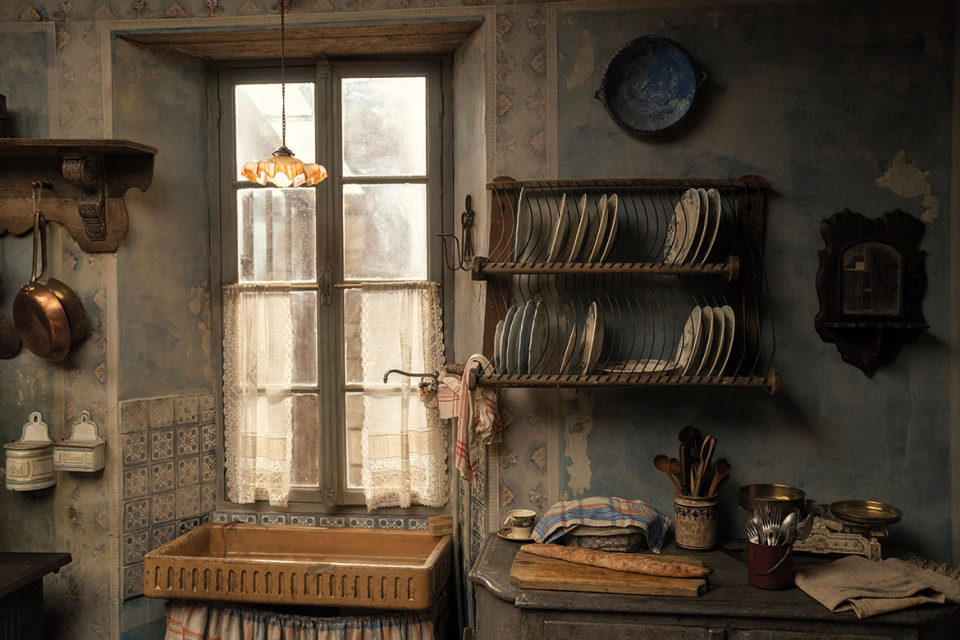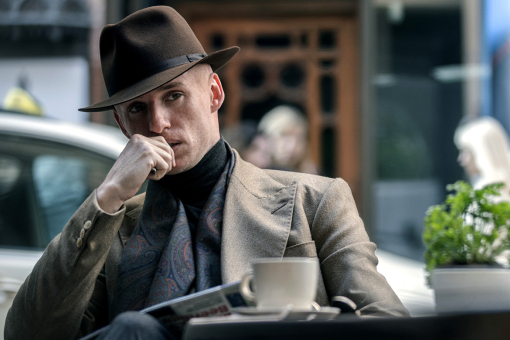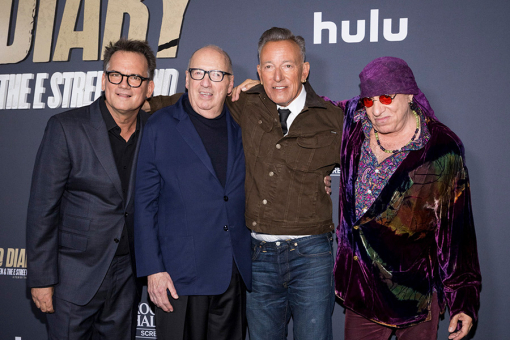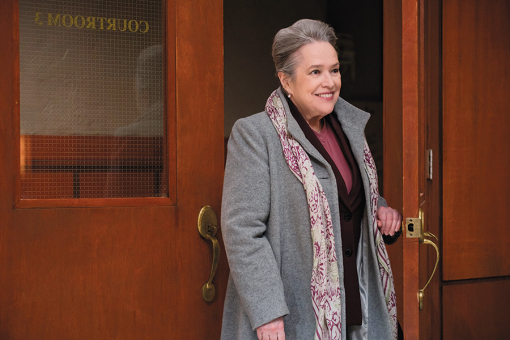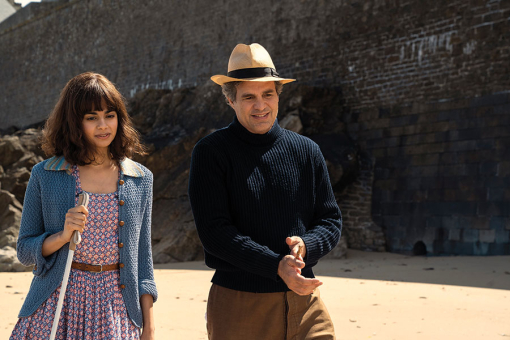Some of what makes All the Light We Cannot See so believable is purely visual. No words are needed; the tension is in the images.
A Nazi officer throttles a girl — a blind girl, no less — and holds her underwater in the tunnels beneath a French town. A young Nazi soldier later races to that girl's aid as bombs detonate around him. Much of the World War II–era scenery was created from scratch; that watery scene, in which we see oysters clinging to worn stones, was shot in Budapest in a specially constructed tank. A sequence of explosions on the fortified wall around the town of Saint-Malo combines special and practical effects. These moments pack visual wallops, but the attention to mundane details also compels.
Netflix's limited series, premiering November 2, captures the everyday and the monstrous, with production, hair, makeup and costume designers bringing us into a world under siege. When Marie-Laure reads 20,000 Leagues Under the Sea in braille, her fingers fly over embossed pages. "We had it made," says production designer Simon Elliott, a 2006 Emmy nominee for Bleak House. "It's abridged. There is artistic license in the sheer size of the braille book. In our story, it's in two volumes. In reality, it would be about five."
Such attention to detail is evident throughout the four episodes of this period drama, the first from director and executive producer Shawn Levy (Stranger Things).
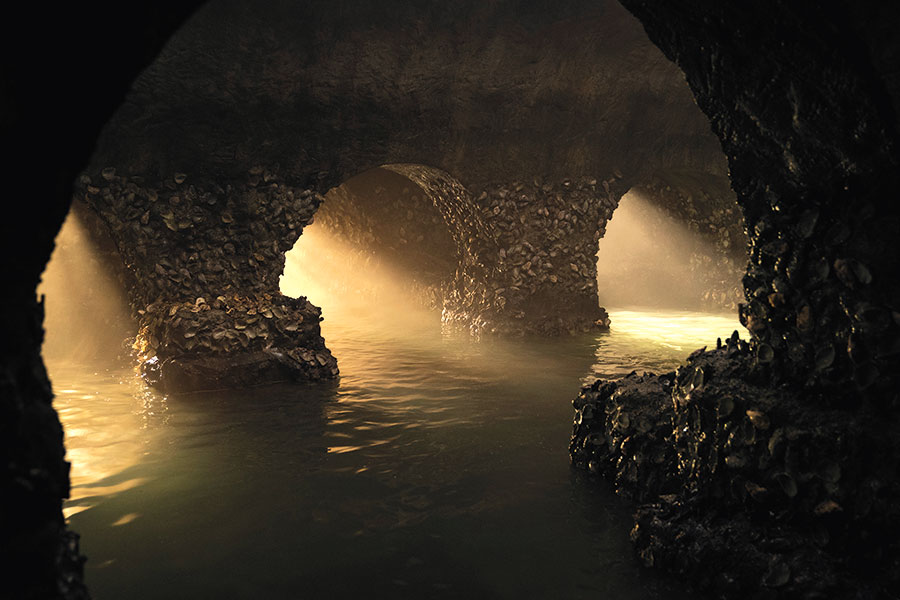
Grotto walls are covered with oysters and barnacles
Although the story is fiction, the historical backdrop is real. These artisans worked for four months to recreate a vanished world accurately. Translating Anthony Doerr's Pulitzer Prize–winning 2014 bestseller to the screen posed many challenges, considering how beloved the sweeping novel is and how specific the casting had to be.
To find a young blind woman to play the lead, Marie-Laure, producers cast a worldwide net. In her audition tape, Aria Mia Loberti wore one of her grandmother's 1940s blouses.
This is the first role for Loberti, a Fulbright scholar studying for her PhD in rhetoric at Pennsylvania State University. Mark Ruffalo (She-Hulk) plays her widowed father, Daniel, a master locksmith at Paris's Museum of Natural History.
Using a university library, Elliott replicated that museum and built exhibits for it, including a dinosaur skeleton. As Nazis occupy Paris, Daniel smuggles away a storied diamond to keep it from falling into German hands. He and Marie-Laure flee Paris for the family homestead on France's northwestern coast. Daniel's uncle Etienne (Hugh Laurie, House), known as The Professor for his philosophical radio broadcasts, lives there with his sister, Madame Manec (Marion Bailey, The Crown).
Louis Hofmann (Dark) plays Werner, the Nazi soldier who dodges bombs and bullets to save Marie-Laure. A radio and engineering prodigy, he grew up finding solace in The Professor's radio shows — as did she.
As the war continues, Marie-Laure broadcasts coded messages from Verne's novel using Etienne's radio setup, which Elliott built from vintage parts. Etienne, a cultured hoarder, has a room crammed with books and equipment.
"It had to have a lot of character," Elliott explains. "It had to have a layering of the family's history and a nod to his eclecticism. There's a lot of nautical dioramas and old bits of furniture. It was sort of ramshackle but very warm, very inviting and, at the same time, sort of shambolic. I wanted it to have a life of its own. We were very lucky. We bought the timbers of an old barn."
Elliott notes how these touches are evocative, that smelling the timber adds to the experience for the actors. This parallels the subtlety in smaller choices, such as Marie- Laure's hair. In Saint-Malo, under her great-aunt's care, Marie-Laure is more pulled together, her thick black hair held back with a barrette. Yes, it's wartime, and few are focused on glamour. But Lynda Armstrong (Stranger Things), who ran the hair and makeup department, says, "It had to be beautiful enough to watch. Because it is, actually, a beautiful story. It just goes through very haunting eras."
Everyone, including hundreds of extras, had to pass Armstrong's inspection for period-appropriate hair and makeup. She dyed scores of boys blond so they'd look right in the Nazi Youth academy where Werner is summoned.
Just as old timber adds texture to the set, embroidery adds texture to Marie-Laure's clothes. The first piece costume designer Andrea Flesch (Midsommar) found was the perfect blouse for a Parisian girl.
In flashbacks, Nell Sutton, also blind, plays the younger Marie-Laure. Thanks to skirts, blouses and dresses adorned with embroidery, Flesch notes, the clothes are "something she can touch and feel." Flesch had a very good idea of what was needed, thanks to her own family photos. "My mother was born in Paris in 1942," she says. "And my grandparents were in the fighting. They worked for the Resistance in Paris." Even during the war, she says, "The French people dressed really well, much different than in other countries."
Flesch rented all the clothes she could and then made many more costumes, because duplicates were necessary. "The best part is always when you dream and put together the characters," she says, explaining her process. "And when you get the actors, it has to fit them in a way that it's their real character, because I like to make costumes that are not separate from the character, but like it was their skin."
Accepting World War II assignments, Flesch says, is rooted in a sense of obligation. "When [I'm offered] a job in that era, I always feel that I have to accept it, because I cannot help what happened. But somehow, I feel that I have to do this because of what happened."
All the Light You Cannot See premieres November 2 on Netflix.
This article originally appeared in emmy magazine issue # 11, 2023.

